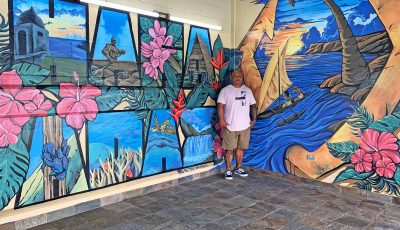Demystifying Appendix A of the Final Programmatic Agreement
Final Programmatic Agreement, Appendix A, training areas: tables and maps
Appendix A, an attachment to the Guam Final Programmatic Agreement, is 115 pages long, full of detailed information. About 73 of the 115 pages relate to the navy, while the remaining pages apply to the air force. This appendix is referenced in the Final Programmatic Agreement under the “Stipulations” section, subsection four. Subsection four basically says that information and maps listed in Appendix A do not require additional review or discussion for PA document purposes. But it also says that the military will notify the Guam State Historic Preservation Officer of proposed testing and training not already listed in Appendix A.
Appendix A, Naval Base Guam
The navy organizes its Naval Base Guam information into 20 broad categories, presented as select training activities tied to various locations contained in approximately 163 rows. The navy breaks out its information into five category columns: “training activity,” “location,” “description,” “mitigations,” and “stressors.” Many training activities are listed several times such as “combat search and rescue,” “underwater survey,” or “bivouac,” while several other training activities are named once. Stated mitigation measures are vague and unclear and do not necessarily demonstrate a level of confidence to show that anything of lasting substance was agreed upon by the ancient Chamorro Pacific Islander people of Guam and the military.
PowerPoint style pictures and unclear labels
There are 19 PowerPoint style pictures of each named training area contained within the Naval Base Guam portion of Appendix A. Each picture is scaled differently so there is no consistency. Each picture has colored legend references that mostly list military ranges (solid red area), installation areas (broken red lines), training areas (solid green lines), and fleet exercises (green boxes). One PowerPoint picture has eight legends. There are no glossaries defining the legends.
All but two PowerPoint pictures cover areas in and close by southwestern Guam. Approximately 157 icons categorized as “authorized military training actions” are listed, and they range from labels such as “unmanned underwater vehicle training” to “amphibious raids,” to “sniper training,” to “EOD and Special Forces Amphibious Training.” Glossaries containing precise definitions of all named activities are missing. Radio Barrigada, Outer Apra Harbor and Orote Point represent the areas that have the most extensive military training type listings.
Most of the PowerPoint style pictures have August 2020 dates, two pictures have September 2020 dates, and one picture has a November 2020 date. All maps have the label “Section 106” as well as “NAVFAC” but there is no information indicating that the government of Guam had any part in the preparations of these pictures. All labels have a disclaimer that says that the military “does not attest to or guarantee the currency and/or validity of the data contained in this map, nor does it attest to any spatial accuracy. This map is for planning purposes only.”
Agreement?
It is hard to find any evidence in the Naval Base Guam portion of Appendix A that supports the idea that the government of Guam had agreed to anything, of any kind, anywhere. Do our ancient Chamorro Pacific Islander people really understand what Appendix A is all about? Do our families, friends and cohorts really understand the meaning of Section 106? Do we really understand how this document came to be called an “agreement”?
Omissions including references to the Chamorro people of Guam
Appendix A Naval Base Guam has many informational omissions. For example, information is not made available as to how many people are or will be involved in the named military training activities. No mention is made as to how many calendar days each named military activity will be conducted per year. In addition, no information is contained that shows the different training tempos, if any, that will be implemented in any named activity.
What is most interesting is that no mention or reference to the government of Guam is made as to how, when, and where input was received, how and when negotiations took place, and how and when specific agreed upon outcomes were produced.
In 91 separate instances, Appendix A Naval Base Guam states that navy activity will result in “Cultural Resources” stressors, based on “Physical disturbance and strike” with nine additional references containing the word “explosives.” What cultural resources are we talking about? What are the interpretations of “Physical disturbance and strike”?
There are roughly 64 instances where the “Mitigations” column is left blank and where the “Stressors” column contains the word “None.” Without a specific definition contained in Appendix A to clarify what is meant by “Cultural Resources” and without a detailed understanding of all training site locations, it is not possible for the Chamorro people to accurately assess and understand the true significance and damage that may take place or is already taking place at several navy-controlled locations.
Where are we headed and what’s needed?
Appendix A is lengthy and as a stand-alone document, deserves to be more closely reviewed, discussed, and understood moving forward. Much of the language contained in the Naval Base Guam portion of Appendix A is relatively unclear and vague and may be easily misunderstood by the public and our ancient Chamorro Pacific Islander people. There are no glossaries and no signs that the government of Guam participated in putting the Naval Base Guam portion of Appendix A together.
What may be most needed now are a series of legislative public hearings that invite and help grow our collective understanding of this Naval Base Guam portion of Appendix A, as well as the overall Final PA document. It is in our collective best interest to fully empower ourselves through demystifying this entire document.

























